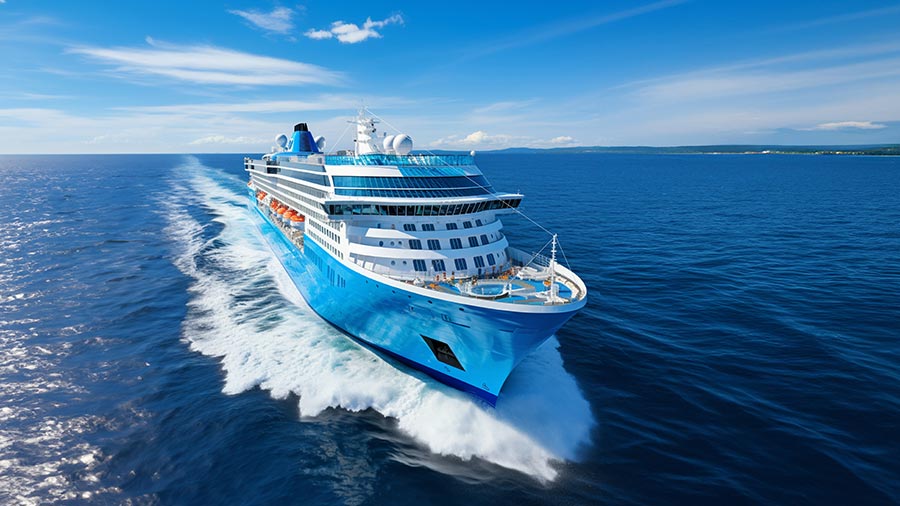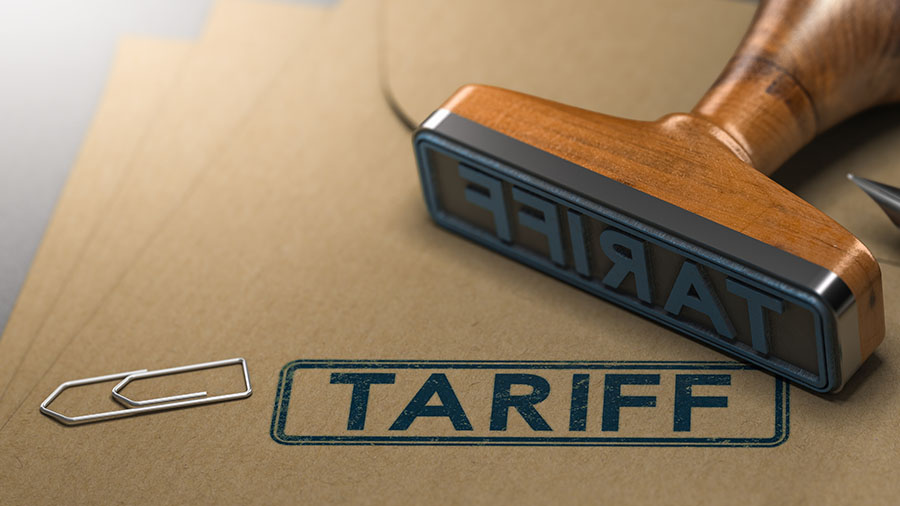China
China Gets a Toehold, and Bitter Memories, in U.S. Iron-Ore Deal
The big news in the iron-ore business this month may be the ouster of Roger Agnelli as chief executive of Brazilian giant Vale—just ahead of the BRIC summit that brings top Brazilian officials to China—but Chinese analysts are all over another item: the deal by U.S. miner Cliffs Natural Resources Inc. to acquire Canada’s Consolidated Thompson Iron Mines Ltd. The ink was barely dry before they were hailing it as a potential trump card in Beijing’s ceaseless quest to break the global oligopoly in iron ore. After all, or so the experts say, Wuhan Iron & Steel Group, China’s third-largest steelmaker, is Consolidated Thompson’s largest shareholder, with 19% of outstanding shares. To the China experts, for Wuhan to have a piece of this enlarged Cliffs delivers “a blow to the position dominated by the world’s top three iron-ore giants, BHP Billiton, Rio Tinto and Vale,” making the country “less dependent on the three giants.” (The Big Three miners, which control 75% of the global seaborne iron ore trade, are a “blatant tyranny,” the Xinhua story declares.) Vince Du/Reuters Australia iron ore at a port in Tianjin, China But as measured by production, the enlarged Cliffs resembles not so much the three supremos as it does Fortescue Metals Group, the Australian miner once cast by the Chinese in the same savior role in which some now see Cliffs. A bit of history: China, the world’s largest buyer of iron, fell out with the Big Three over pricing in a series of public rows that started in late 2008 and reached its apogee when China arrested four Rio Tinto employees in July 2009, alleging bribery in the price negotiations. That was back in the days when Chinese steelmakers engaged in secretive yearly talks with the Big Three to hammer out a single iron-ore import price that then became the global benchmark. As the benchmark system, which had lasted for about three decades, came apart in 2009 amid accusations and recriminations, Chinese steelmakers quietly struck deals with the Big Three to import iron ore based on “provisional prices.” Desperate to snatch a victory from the dragged-out battle, the Chinese steel government lobby turned to Fortescue in August 2009 and won a deal for marginally cheaper ore (about 3 cents less per dry metric ton than the Rio Tinto-BHP price). The Big Three reacted with indifference. “We do not see this pricing agreement as relevant to our pricing for fiscal 2009,” a Rio Tinto spokesman said at the time. They had a point: Fortescue put out 40 million tons of ore a year (less than what China imports in a single month), and even its plans to raise that to 155 million tons by 2014 didn’t make the deal a game-changer. Now the Chinese are looking to the enlarged Cliffs, which can produce 48 million tons annually and hopes to double that by 2013. But the world has changed. The Big Three last year discarded the benchmark system in favor of rolling spot-based prices — some set quarterly, some monthly — struck in separate agreements with individual steelmakers rather than a single set of talks with government-sponsored lobbies. The new system now rules the iron-ore world. The room for Beijing to exert political influence in iron ore pricing—never very wide—has narrowed even more. Even Wuhan’s presence as a substantial shareholder in a North American mining business—a company spokesman said Wednesday it supports the Cliffs-Thompson deal—may yield less clout than hoped for. It isn’t the first Chinese company to have a big piece of a global iron-ore mining company: Hunan Valin Iron & Steel Group is Fortescue’s second-largest shareholder, with a 17.3% stake. And of course, the Aluminum Corp. of China, or Chinalco, has been Rio Tinto’s largest shareholder since 2007, with a 9% stake. While the Chinese strategy of aggressively diversifying iron ore supply sources—sending emissaries across Latin America, Southeast Asia, Australia and Africa to secure a series of stakes—plays well for its longer-term resource security, it’s still not quite about to throw the Big Three’s pricing power down Cliffs. — Chuin-Wei Yap
The big news in the iron-ore business this month may be the ouster of Roger Agnelli as chief executive of Brazilian giant Vale—just ahead of the BRIC summit that brings top Brazilian officials to China—but Chinese analysts are all over another item: the deal by U.S. miner Cliffs Natural Resources Inc. to acquire Canada’s Consolidated Thompson Iron Mines Ltd. The ink was barely dry before they were hailing it as a potential trump card in Beijing’s ceaseless quest to break the global oligopoly in iron ore.
After all, or so the experts say, Wuhan Iron & Steel Group, China’s third-largest steelmaker, is Consolidated Thompson’s largest shareholder, with 19% of outstanding shares. To the China experts, for Wuhan to have a piece of this enlarged Cliffs delivers “a blow to the position dominated by the world’s top three iron-ore giants, BHP Billiton, Rio Tinto and Vale,” making the country “less dependent on the three giants.” (The Big Three miners, which control 75% of the global seaborne iron ore trade, are a “blatant tyranny,” the Xinhua story declares.)

- Vince Du/Reuters
- Australia iron ore at a port in Tianjin, China
But as measured by production, the enlarged Cliffs resembles not so much the three supremos as it does Fortescue Metals Group, the Australian miner once cast by the Chinese in the same savior role in which some now see Cliffs.
A bit of history: China, the world’s largest buyer of iron, fell out with the Big Three over pricing in a series of public rows that started in late 2008 and reached its apogee when China arrested four Rio Tinto employees in July 2009, alleging bribery in the price negotiations. That was back in the days when Chinese steelmakers engaged in secretive yearly talks with the Big Three to hammer out a single iron-ore import price that then became the global benchmark.
As the benchmark system, which had lasted for about three decades, came apart in 2009 amid accusations and recriminations, Chinese steelmakers quietly struck deals with the Big Three to import iron ore based on “provisional prices.” Desperate to snatch a victory from the dragged-out battle, the Chinese steel government lobby turned to Fortescue in August 2009 and won a deal for marginally cheaper ore (about 3 cents less per dry metric ton than the Rio Tinto-BHP price).
The Big Three reacted with indifference. “We do not see this pricing agreement as relevant to our pricing for fiscal 2009,” a Rio Tinto spokesman said at the time. They had a point: Fortescue put out 40 million tons of ore a year (less than what China imports in a single month), and even its plans to raise that to 155 million tons by 2014 didn’t make the deal a game-changer. Now the Chinese are looking to the enlarged Cliffs, which can produce 48 million tons annually and hopes to double that by 2013.
But the world has changed. The Big Three last year discarded the benchmark system in favor of rolling spot-based prices — some set quarterly, some monthly — struck in separate agreements with individual steelmakers rather than a single set of talks with government-sponsored lobbies. The new system now rules the iron-ore world. The room for Beijing to exert political influence in iron ore pricing—never very wide—has narrowed even more.
Even Wuhan’s presence as a substantial shareholder in a North American mining business—a company spokesman said Wednesday it supports the Cliffs-Thompson deal—may yield less clout than hoped for. It isn’t the first Chinese company to have a big piece of a global iron-ore mining company: Hunan Valin Iron & Steel Group is Fortescue’s second-largest shareholder, with a 17.3% stake. And of course, the Aluminum Corp. of China, or Chinalco, has been Rio Tinto’s largest shareholder since 2007, with a 9% stake.
While the Chinese strategy of aggressively diversifying iron ore supply sources—sending emissaries across Latin America, Southeast Asia, Australia and Africa to secure a series of stakes—plays well for its longer-term resource security, it’s still not quite about to throw the Big Three’s pricing power down Cliffs.
—Chuin-Wei Yap
The restructuring of the economy and resulting efficiency gains have contributed to a more than tenfold increase in GDP since 1978.
In 2009, China announced that by 2020 it would reduce carbon intensity 40% from 2005 levels.
China has emphasized raising personal income and consumption and introducing new management systems to help increase productivity.
Some economists believe that Chinese economic growth has been in fact understated during much of the 1990s and early 2000s, failing to fully factor in the growth driven by the private sector and that the extent at which China is dependent on exports is exaggerated.
The two sectors have differed in many respects.
A report by UBS in 2009 concluded that China has experienced total factor productivity growth of 4 per cent per year since 1990, one of the fastest improvements in world economic history.
The market-oriented reforms China has implemented over the past two decades have unleashed individual initiative and entrepreneurship, whilst retaining state domination of the economy.
The ministry made the announcements during a press conference held in Xiamen on the upcoming United Nations Conference on Trade and Development (UNCTAD) World Investment Forum and the 14th China International Fair for Investment and Trade.
From January to June, the ODI in financial sectors was up by 44 percent to $17.9 billion, and in July alone, the ODI recorded $8.91 billion, the highest this year.
China is aiming to be the world’s largest new energy vehicle market by 2020 with 5 million cars.
In large part as a result of economic liberalization policies, the GDP quadrupled between 1978 and 1998, and foreign investment soared during the 1990s.
Despite initial gains in farmers’ incomes in the early 1980s, taxes and fees have increasingly made farming an unprofitable occupation, and because the state owns all land farmers have at times been easily evicted when croplands are sought by developers.
In terms of cash crops, China ranks first in cotton and tobacco and is an important producer of oilseeds, silk, tea, ramie, jute, hemp, sugarcane, and sugar beets.
China ranks first in world production of red meat (including beef, veal, mutton, lamb, and pork).
Coal is the most abundant mineral (China ranks first in coal production); high-quality, easily mined coal is found throughout the country, but especially in the north and northeast.
There are large deposits of uranium in the northwest, especially in Xinjiang; there are also mines in Jiangxi and Guangdong provs.
Coal is the single most important energy source in China; coal-fired thermal electric generators provide over 70% of the country’s electric power.
Before 1945, heavy industry was concentrated in the northeast (Manchuria), but important centers were subsequently established in other parts of the country, notably in Shanghai and Wuhan.
Continued here:
China Gets a Toehold, and Bitter Memories, in U.S. Iron-Ore Deal
China
Foreign Tourist Groups on Cruise Ships Fully Permitted Visa-Free Entry in China

China will allow visa-free entry for foreign tourist groups arriving by cruise ship at 13 ports along the coast, starting May 15, 2024. Visitors must stay with the same ship and in permitted areas for up to 15 days. This policy aims to boost tourism and facilitate high-quality development in the cruise industry.
China’s immigration agency announced that it will grant a visa-free policy for foreign tourist groups to enter China by cruise at all cruise ports along the coast of China, starting May 15, 2024. The tourist group must remain with the same cruise ship until its next port of call and stay within permitted areas for no more than 15 days.
Effective May 15, 2024, the National Immigration Administration (NIA) has officially implemented a visa-free policy for foreign tourist groups entering China via cruise ships. This progressive move aims to enhance personnel exchanges and foster cooperation between China and other nations, furthering the country’s commitment to high-level openness.
Under this policy, foreign tourist groups, comprising two or more individuals, who travel by cruise ship and are organized by Chinese domestic travel agencies, can now enjoy visa-free entry as a cohesive group at cruise ports in 13 cities along the Chinese coast.
The tourist group must remain with the same cruise ship until its next port of call and stay within China for no more than 15 days. The eligible areas for this policy are coastal provinces (autonomous regions and municipalities) and Beijing.
Furthermore, to support cruise tourism development, seven additional cruise ports—Dalian, Lianyungang, Wenzhou, Zhoushan, Guangzhou, Shenzhen, and Beihai—have been included as applicable ports for visa-free transit.
The recent implementation of the visa-free policy for foreign tourist groups entering China via cruise ships is poised to have several significant effects. The policy will provide crucial support for the cruise economy and the overall cruise industry. By facilitating smoother travel for foreign tourist groups, it acts as a catalyst for high-quality development in this sector.
Additionally, under this policy, international cruise companies can strategically plan their global routes by designating Chinese port cities, such as Shanghai, Xiamen, and Shenzhen, as docking destinations. This move is expected to attract more cruise ships to Chinese ports, ultimately bringing in a larger number of international visitors to the Chinese market.
This article is republished from China Briefing. Read the rest of the original article.
China Briefing is written and produced by Dezan Shira & Associates. The practice assists foreign investors into China and has done since 1992 through offices in Beijing, Tianjin, Dalian, Qingdao, Shanghai, Hangzhou, Ningbo, Suzhou, Guangzhou, Dongguan, Zhongshan, Shenzhen, and Hong Kong. Please contact the firm for assistance in China at china@dezshira.com.
China
China’s New Tariff Law: Streamlining and Standardizing Current Tariff Regulations

China’s new Tariff Law consolidates import and export duties, clarifies rules for imposing counter-tariffs, and sets a December 1, 2024 effective date. It codifies existing practices on cross-border e-commerce and rules on the origin of goods into law, impacting trade relations.
China’s new Tariff Law consolidates rules on import and export duties that were previously implemented via several legal documents and makes important clarifications and additions to prior regulations. Among other changes, it stipulates provisions for the Chinese government to impose counter-tariffs on imported goods, codifying these powers into law for the first time. We outline all the notable updates to the China Tariff Law and discuss the implications for the country’ current trade relations.
On April 26, 2024, the National People’s Congress (NPC), China’s legislature, adopted the Tariff Law of the People’s Republic of China (the “Tariff Law”) after several rounds of revisions.
The new Tariff Law will replace the Import and Export Tariff Regulations of the People’s Republic of China, which fall under the purview of the State Council, and adopts many of its provisions.
Previously, Chinese law had not stipulated legislative powers to implement countervailing tariffs, although China was nonetheless able to impose counter-tariffs on trade partners through other means.
China’s new Tariff Law comes into effect on December 1, 2024.
China’s Tariff Law elevates several existing provisions and practices to the level of law. For instance, Article 3 of the Tariff Law clarifies the obligations of cross-border e-commerce platforms for tariff withholding and implementing consolidated taxation.
The Tariff Law also solidifies the rules and regulations on the origin of goods, stipulating that the application of tariff rates shall comply with the corresponding rules of origin. Although this has been previously implemented in practice, it is the first time this has been codified into law.
This article is republished from China Briefing. Read the rest of the original article.
China Briefing is written and produced by Dezan Shira & Associates. The practice assists foreign investors into China and has done since 1992 through offices in Beijing, Tianjin, Dalian, Qingdao, Shanghai, Hangzhou, Ningbo, Suzhou, Guangzhou, Dongguan, Zhongshan, Shenzhen, and Hong Kong. Please contact the firm for assistance in China at china@dezshira.com.
China
Outlook on Bilateral Trade and Investment between China and United Arab Emirates (UAE)

The UAE and China have a strong partnership, with the UAE being China’s top trade partner in the Arab world. Both countries collaborate on various sectors like logistics and technology, showcasing mutual commitment to economic growth and global cooperation. High-level trade and investments continue to drive their relationship.
The UAE and China share a robust partnership integral to both countries’ development and foreign policy goals, exemplifying a model of collaboration. Bilateral trade thrives, with the UAE as China’s top trade partner in the Arab world, while investments span key sectors like logistics and technology. This comprehensive strategic partnership continues to evolve, showcasing mutual commitment to economic growth and global cooperation.
The United Arab Emirates (UAE) holds a significant position in China’s trade and commercial connections within the Middle East, particularly in the Arab Gulf region. This partnership is integral to China’s broader strategic initiatives, including the Belt and Road Initiative (BRI), which the UAE actively supports.
Additionally, the UAE plays a crucial role in advancing China’s foreign policy objectives, such as enhancing South-South cooperation, particularly in technical collaboration among developing nations and the Global South in areas like resources and technology.
In this article, we delve into the dynamics of bilateral trade and investment between the UAE and China, exploring the key factors driving their economic relationship and the opportunities it presents for mutual growth and prosperity.
China and the UAE first established their diplomatic relations in 1984. While China has an embassy in Abu Dhabi and a consulate general in Dubai, the UAE has a consulate general in Hong Kong and an embassy in Beijing. China and the UAE have long been close partners, collaborating extensively on economic, political, and cultural fronts.
In 2018, Chinese President Xi Jinping went on a state visit to the UAE, making history as the first Chinese head of state to visit the country in the previous 29 years. The visit was instrumental in lifting bilateral relations to a ‘comprehensive strategic partnership’.
High-level trade has always been the foundation of bilateral ties. Bilateral commerce between China and the UAE reached new heights in 2021, surpassing US$75.6 billion. Additionally, as of 2022, about 6,000 Chinese businesses operate in the UAE, with a sizable Chinese population working primarily in the infrastructure and energy sectors. The UAE is also China’s second-largest economic partner in the Middle East, after Saudi Arabia.
This article is republished from China Briefing. Read the rest of the original article.
China Briefing is written and produced by Dezan Shira & Associates. The practice assists foreign investors into China and has done since 1992 through offices in Beijing, Tianjin, Dalian, Qingdao, Shanghai, Hangzhou, Ningbo, Suzhou, Guangzhou, Dongguan, Zhongshan, Shenzhen, and Hong Kong. Please contact the firm for assistance in China at china@dezshira.com.












